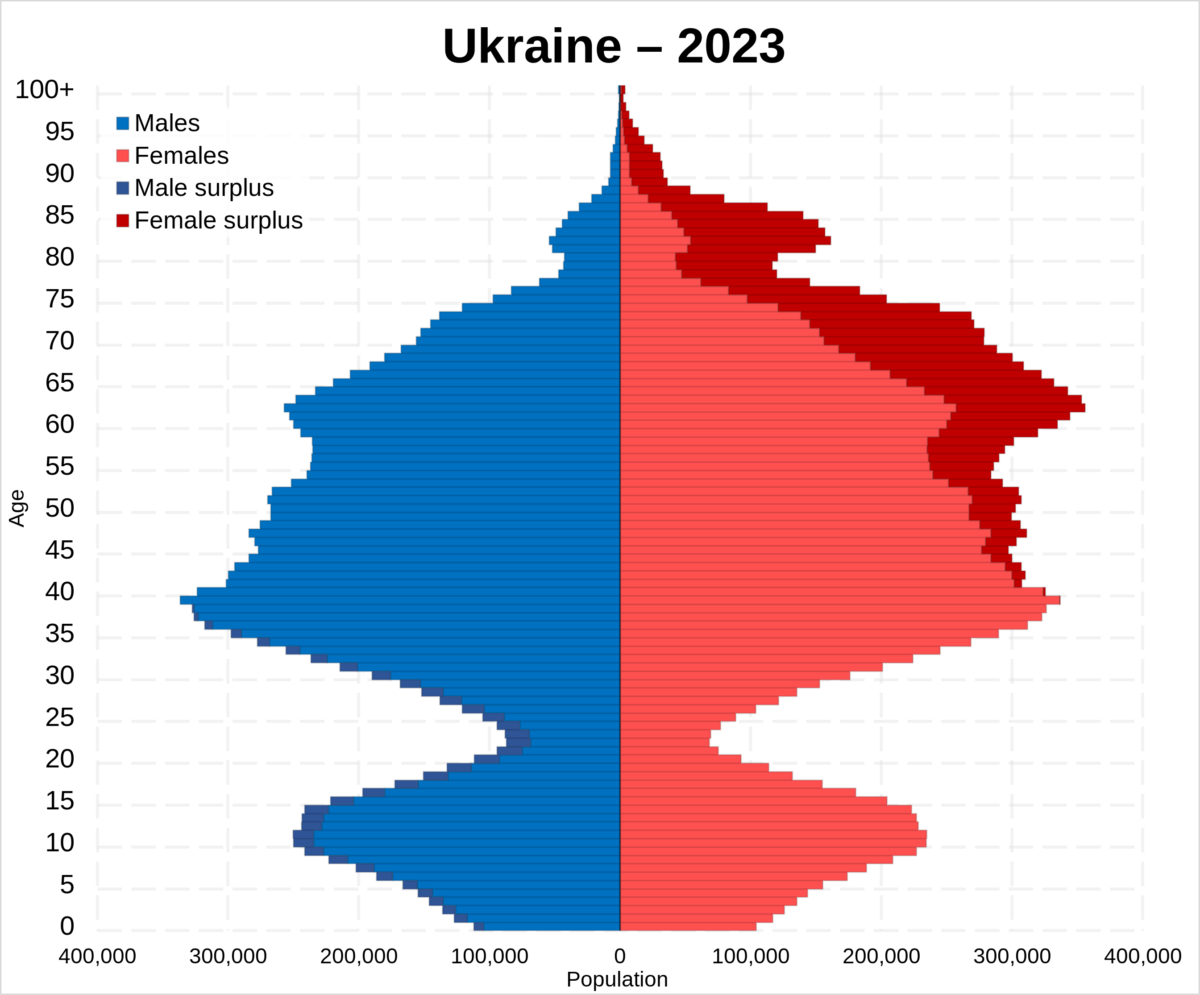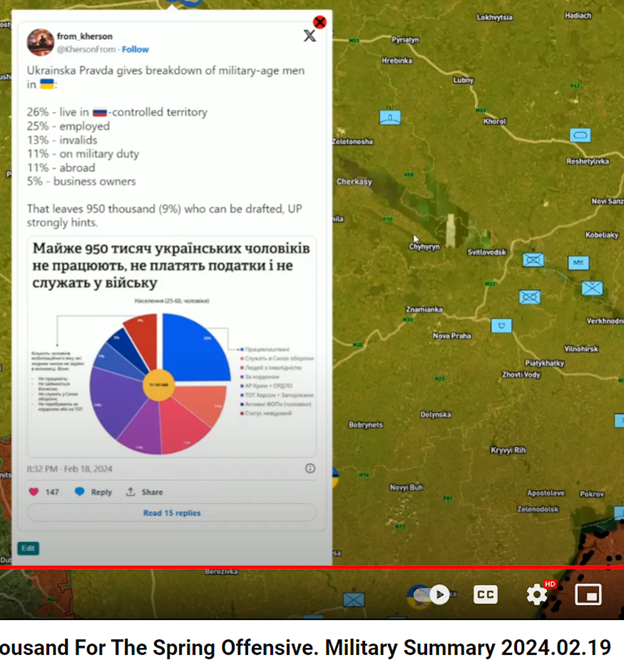Ok, I’m not good at editing comments yet, so I’m posting this what’s supposed to be a comment as a post. If that bothers you, take an aspirin.
I agree with you, Carlos. Allison’s could be the worst take I’ve read in any article on any subject this year, though this year is pretty new. The best thing about his article is that it’s short. And the font. So as to add fuel to your righteous miffedness, however, I include below the text of Allison’s article interspersed with my own red-letter capitalized comments. Enjoy
What Americans Owe Ukraine
by Graham Allison (20) Graham Allison (@GrahamTAllison) / X (twitter.com)
What Americans Owe Ukraine | The National Interest
Imagine that two years ago—before Putin invaded Ukraine—someone had come to the US with a credible proposition to hobble Russia’s military threat to Europe for the decade ahead THREAT? WHAT THREAT? A NEW TANK? without the loss of a single American soldier. How much would Americans have been willing to invest in that initiative? NONE. NOT A DIME A quarter of our $800 billion dollar defense budget? A tithe a year for several years?
Imagine further that the proposal would also: -Awaken our European NATO partners to the reality of bloody, large-scale combat in the 21st century—motivating them to invest hundreds of billions of dollars in building their own defense capabilities? AWAKEN THEM TO IT? WE CAUSED IT TO BE BLOODY AND LARGE SCALE. HELL WE COST THEM BILLIONS.-Persuade two of the most militarily capable European nations—Finland and Sweden—to join NATO and thus significantly enhance its deterrent strength. WHY? BECAUSE NATO IS NICE? THEY CAN BE MILITARILY CAPABLE ALL THEY WANT.-Deliver to Putin a huge strategic failure—by decisively defeating his attempt to capture Kyiv and essentially erase Ukraine from the map. A SETBACK, NOT YET A HUGE STRATEGIC FAIURE. AND WE ARE NOT THE ONES WHO DEFEATED HIM. AND HE IS NOT YET DEFEATED. AND KIEV IS LIKELY TO BECOME A COUNTY SEAT AS A RESULT OF THE ALLISONESQUE FONDNESS FOR HEAVY MEDDLE. -Persuade the nation with the most important economy in Europe—Germany—to eliminate its dependence on Russia for cheap energy and begin building up its own military forces. OH REALLY? BY BLOWING UP A PIPE? AND THE GERMANS ARE NOT GOING TO IMPORT RUSSIAN HYDROCARBONS IN THE FUTURE? OF COURSE THEY ARE.-Revitalize the transatlantic alliance in a sustained coordinated campaign to defeat Russian aggression by arming and funding Ukraine and weakening Russia by imposing the most -comprehensive economic sanctions in history. THE ECONOMIC SANTIONS HAVE NOT KEPT THE RUSSIAN ECONOMY FROM EXPANDING. THAT IS NONESENSE. REVITALIZE THE ALLIANCE? THEY ARE TALKING ABOUT HEADING IT WITHOUT US. I HOPE THEY DO. And if that were not enough, even arousing the individual who has the most sway with Putin, China’s Xi Jinping, to warn him both privately and publicly against any “threat or use of nuclear weapons”—thus strengthening the “nuclear taboo” that has emerged over the past 78 years since nuclear weapons were last used in war. OH, GOT Xi ON A MORAL TRACK WITH YOU, DID YOU? PAHLEESE. HE IS THE BAD GUY. HE WANTS US TO FEEL THE MORAL TABOO, NOT HIM. AND WHAT IS THIS ABOUT THE THREAT OF NUKES, ANYHOW. ONLY OUR INVOLVEMENT IN URAINE RAISED THE THREAT OF THEIR USE. THIS IS ABSOLUTELY NUTS. THE KEY TAKEAWAY IN THIS PARA SHOULD BE “the individual who has the most sway with Putin, China’s Xi Jinping” WE SHOULD HAVE THE MOST SWAY WITH PUTIN, NOT A CHINAMAN.
Had such a proposal been offered, it would have seemed unbelievable and likely dismissed as too good to be true. But if we examine what has actually happened over the 24 months since Putin invaded Ukraine, one incandescent fact is impossible to deny. Thanks to Ukrainians’ remarkable courage NO GREATER THAN THAT OF THE RUSSIANS., determination to fight for their own freedom NOPE, NOT TRUE, SEE THE CHARTS ELSEWHERE ON THIS SITE, and resilience, the adversary whom the US threat matrix had ranked as the second most capable military power in the world has been. Putin’s forces failed in their lightening attack aimed at capturing Kiev. Ukraine’s military recovered more than half of the territory Russia seized in the first chapter of the war. “MORE THAN HALF?” DOESN’T THAT LEAVE ABOUT A HALF? AND THAT HALF IS GROWING. And Ukraine has fought Russia to a standstill NOPE. MAYBE HAD ALLISON WRITTEN THIS A YEAR AGO WHEN THE ESTABLISHMENT CLAIM WAS THAT THE UKES WERE ABOUT TO SHOW US A HUGE COUNTEROFFENSIVE OFFENSIVE THAT WOULD SWEEP THE RUSSIANS OUT, EVEN OF THE CRIMEA. NOW THE UKRAINE COUTER-OFFENSIVE IS INDEED A DEFENSIVE COUNTEROFFENSIVE, SLOUCHING TO THE WEST. at which it has been unable to make any significant advances for more than a year. TOO BAD ALLISON DOES NOT FOLLOW THE BATTLE
The US is fortunate to have our nation’s most insightful Russia watcher now serving as Director of CIA. Bill Burns IT IS UNFORTUNATE, NOT FORTUNATE. WE DO NOT NEED ANOTHER INSIGHTFUL RUSSIA WATCHER. THAT IS PART OF THE PROBLEM has analyzed Putin for decades and dealt with him directly over the years he served as US Ambassador to Moscow. Last month, Burns summarized as the telling bottom lines in this war: “At least 315,000 Russian soldiers have been killed or wounded THAT’S GOOD? DEAD RUSSIANS? ZELENSKY JUST TOLD BRET BAIR THAT THE UKRAINIANS HAVE BEEN KILLING RUSSIANS AT A FIVE TO ONE RATIO. THAT IS AN INSANELY CRUEL STATE TO ACCEPT. MUCH MUCH MORE LIKELY AN EQUAL IF NOT GREATER NUMBER OF UKRAINIANS HAVE BEEN KILLED IN COMBAT. NOT THE KIND OF THING WE SHOULD BE BRAGGING ABOUT ANYWAY, two-thirds of Russia’s prewar tank inventory has been destroyed SO WHAT ? NOW THEY ARE MAKING ALL NEW STUFF. FIRST PARAGRAPH, ALISON CITES A NATIONAL INTEREST ARTICLE ABOUT A NEW RUSSIAN TANK AS THOUGH THAT’S SOMETHING. NOW THE RUSSIANS ARE MAKING HUNDREDS OF THEM and Putin’s vaunted decades-long military modernization program has been hollowed out BALONEY, IT IS FINALLY IMPELLED.” Without the loss of the life of a single American soldier, Putin’s military threat to NATO has been substantially diminished. VERY DOUBTFUL
As we admire and thank the brave Ukrainian soldiers THANK THEM FOR WHAT? DYING IN VAIN SO YOU CAN SELL YOUR PARTNERS SYSTEMS? AND PLEASE, THE UKRAINIAN SOLDIERS ARE NOT BRAVER THAN THE RUSSIAN SOLDIERS who have been killing and dying on the battlefield, we must also recognize that their LACK OF success would not have been possible with PROLONGED BUT for the vital lifeline of arms, ammunition, and money from the US and Europe. Over the past two years, the free world has given Ukraine some $230 billion in aid THAT WE DID NOT SPEND ON OUR OWN BORDERS, with the US providing $45 billion in military assistance and $30 billion in non-military (humanitarian and financial) aid and the Europeans giving $50 billion in military aid and $114 billion in non-military aid. OUCH OUCH
Last month, the EU voted an additional $54 billion for Ukraine. THE EU IS NOT OUR ALLY, IT IS A BUREAUCRATIC CORRUPTION, AND THEY CAN SEPEND MONEY ANY WAY THEY LIKE On Monday, the Senate passed legislation appropriating another $60 billion in military and economic aid that should allow Ukrainian warriors to fight Russians to a point where it will be in a position to negotiate with Russia to end this war. THIS IS NUTS. UKRAINE IS IN THE BEST POSITION RIGHT NOW. THE GOAL HAD BEEN TO DEFEAT THE RUSSIANS AND GET PUTIN OUT. NOW IT IS FOR A BETTER NEGOTIATING POSITION? EVERY DAY THAT PASSES, THE RUSSIAN NEGOTIATING POSITION IMPROVES. LOGIC DICTATES THAT THE BEST TIME FOR US TO NEGOTIATE IS RIGHT NOW.
My prediction at this time (I’ve been wrong in the past, no sweat) is that April First will be a revealing day for all us fools. Something will be known then or shortly after about the current Ukrainian government. Regardless, by the end of 2024, and probably before our November election rolls around, the ground truth will be one in which the Russians occupy and annex much more of what Allison & company might like to have called Ukraine. Ukraine, if there is to be one, will be half the size it is now and will be negotiating for a port. Sinking Russian naval vessels will not have helped on that point.


